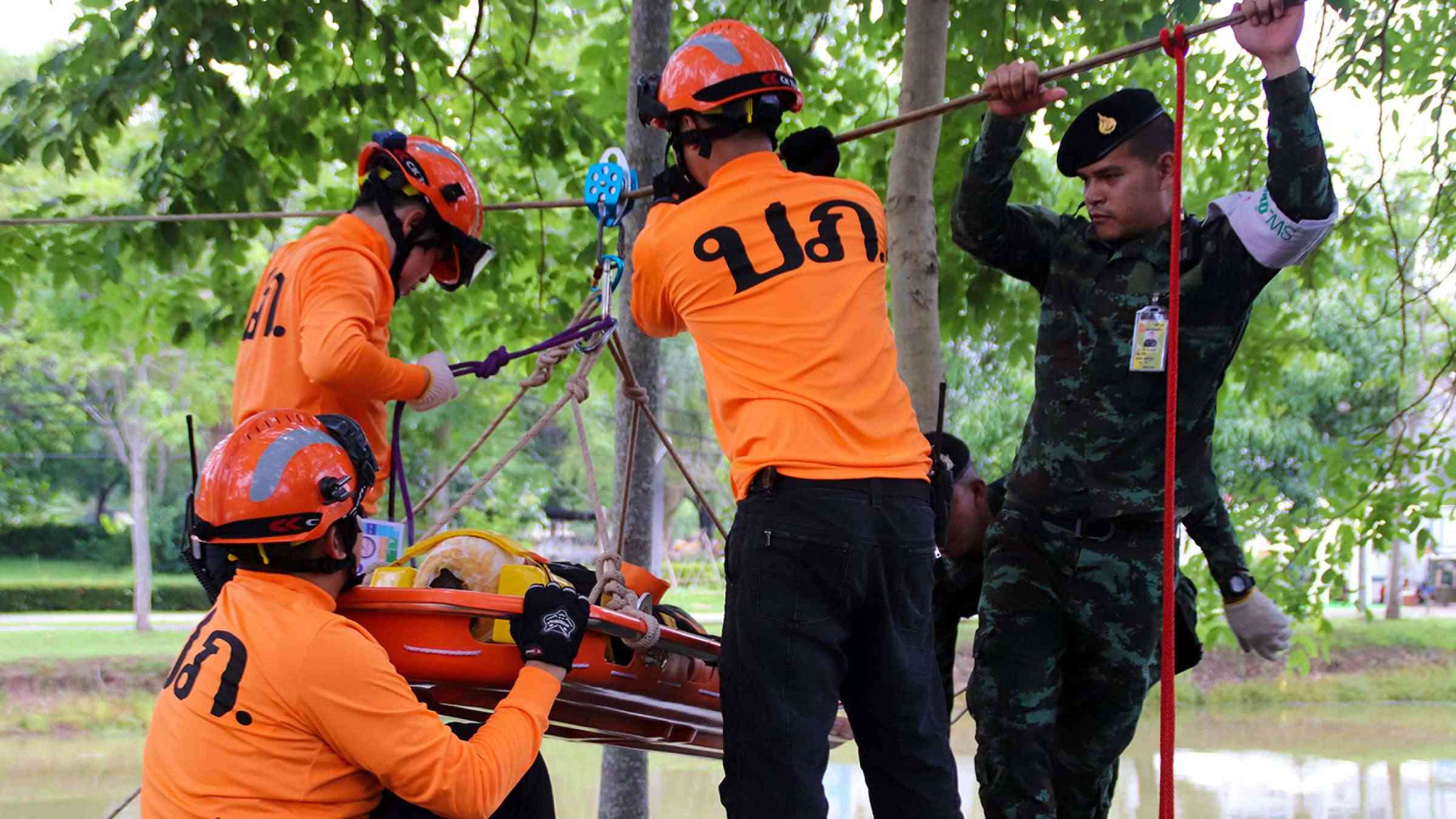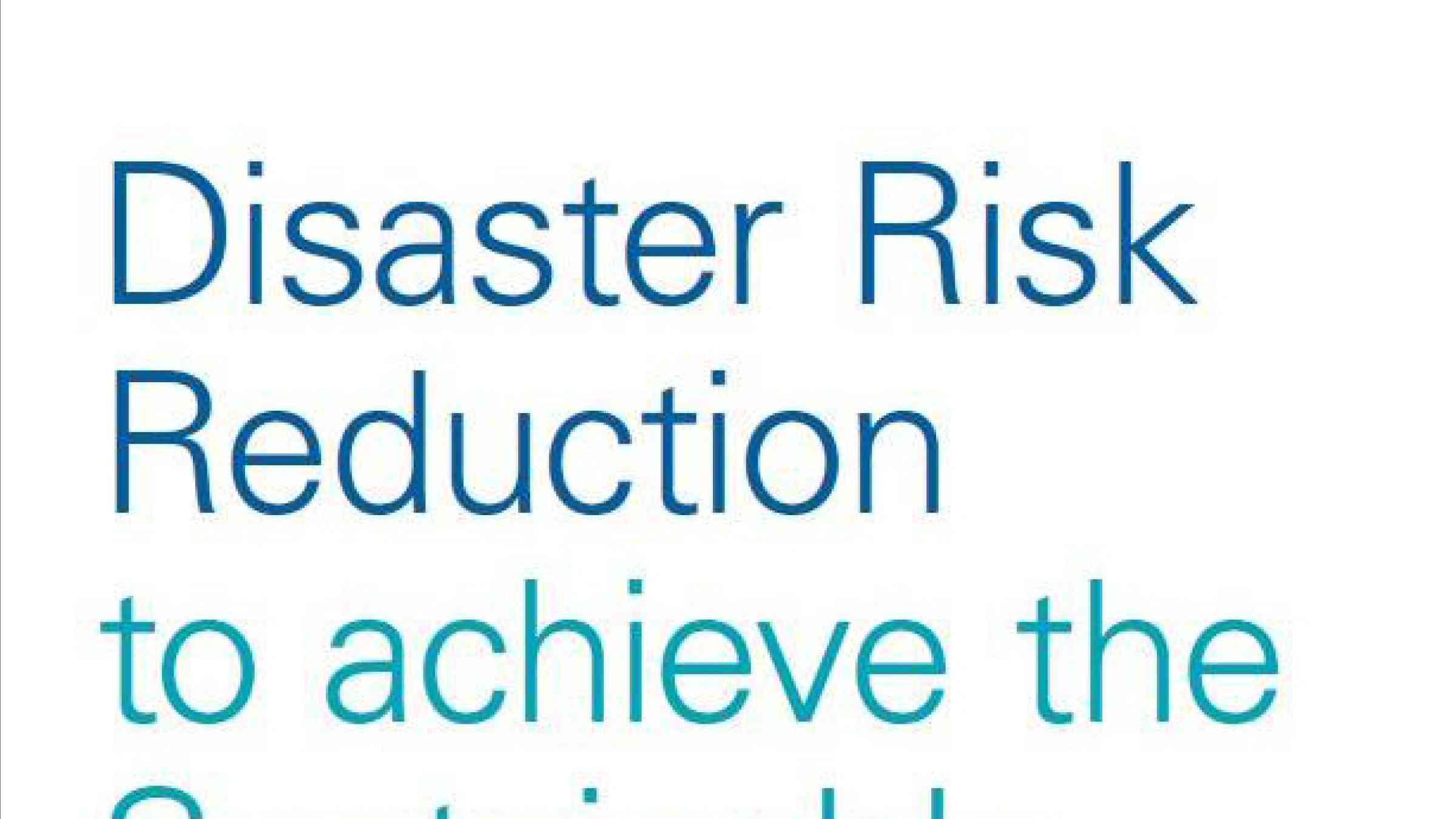DRR Toolkit for Parliamentarians
The Sendai Framework for Disaster Risk Reduction (2015-2030) puts responsibility for risk reduction squarely at the foot of the state.
Risk reduction requires whole-of-society involvement, but primary responsibility is borne by the state. Parliaments and parliamentarians are uniquely positioned to catalyse, oversee and monitor disaster risk reduction laws and policies and their impact at local levels.
The Sendai Framework explicitly calls for parliamentarians to develop new or amend existing disaster risk reduction-related legislation, set budget allocations and hold governments accountable for public protection.
Parliaments’ mandate for DRR
Parliamentarians can advocate for disaster risk reduction in their roles as legislators, budget allocators, reviewers and approvers, financiers, overseers of government activities, and constituency representatives. Successful DRR will not be achievable without DRR-specific policies, legislation, budgets and oversight.
"Increasing risks from climate hazards and the threat of disasters can be effectively reduced through a whole of nation approach where a strong legal framework is backed by sufficient resources from the national level, where they catalyze action down at the local level."
Philippine Senator Loren Legarda, UN Regional Champion for Disaster Risk Reduction and Climate Change, 2020


Ten actions for parliamentarians
Legislate
1. Create DRR legislation - with clearly defined roles and responsibilities across all of government- after conducting risk and vulnerability assessments and developing multi-hazard and multi-sectoral DRR strategies and policies.
Effective legislation should:
- Establish DRR mandates
- Define clear responsibilities and accountabilities in governance structures
- Facilitate stakeholder participation in decision-making
- Promote greater investment in risk reduction with financial incentives for DRR initiatives; for example, tax breaks and insurance cost reductions as a result of DRR investments
- Consider potential gender impacts and ensure that initiatives benefit women and men equitably
- Allocate resources for capacity building and targeted DRR investments
- Strengthen accountability for risk creation by public and private sector actors
- Deter risk creation by all members of society by introducing taxes and fines for risk-generating behaviours
- Encourage risk reduction with financial incentives for new technologies and tax breaks for pollution reduction
- Provide resources for subnational and local DRR initiatives, such as land use, water and waste management, and urban planning
- Link DRR to sectoral laws related to sustainable development and climate change.
2. Review and amend existing sectoral legislation to integrate DRR that reflects international commitments and includes the latest knowledge, while ensuring that DRR can be adapted to evolving requirements.
Oversee
3. Ensure that all parliamentary oversight functions and activities consider DRR and risk-informed decision-making, and provide access to sufficient information in standardized, consistent formats.
Oversight activities can occur periodically or at the end of initiatives, depending on their duration. The intervals at which oversight is conducted are the result of a balance between costs, time and the duration of the initiative. Parliaments can make recommendations to government and influence outcomes using the information given through oversight. They can also legislate amendments that improve results, improve governance and better align with mandates.
To facilitate good DRR governance, parliaments should:
- Have clear, strong oversight mandates in DRR legislation, regulations and enforcement
- Ensure transparency and accountability are included in DRR legislation, policies and regulations
- Have complete and timely access to the information on DRR initiatives required for oversight
- Include data and reporting format standards for all DRR legislation to enable DRR assessments and comparisons during oversight activities
- Ensure that opposition and minority parties participate fully in DRR oversight
- Ensure that subnational governments participate in DRR oversight activities in their jurisdiction(s) and areas of responsibility
- Include the perspectives and participation of vulnerable populations – such as women and girls, poor people, ethnic minorities and people with disabilities – in oversight activities
- Conduct a gender analysis during oversight activities
- Manage potential corruption with measures such as legislation that holds officials legally responsible for their actions that create and increase risk and vulnerability
- Be willing to hold government to account for meeting its obligations to DRR.
Components to include in DRR oversight:
- Clearly defined roles and responsibilities for DRR oversight within all associated departments, agencies, offices and participants
- Clearly defined indicators and measures (targets, milestones and timeframes) for DRR initiatives created that are in place before initiatives begin
- Detailed guidelines for DRR data collection methodologies and reporting criteria
- Consistent data format and detail levels across all DRR initiatives to facilitate comparisons
- Regulatory compliance and enforcement policies, standards and guidelines
- Evaluation of DRR initiatives and results by independent institutions and agencies
- Adequate funding for monitoring, reporting, evaluating, adjusting, improving and enforcement of DRR measures at all required levels: national, subnational and local
- Ability to respond to DRR evaluations with programme corrections, adjustments and alterations
- Budgetary oversight with review of DRR funds allocated versus funds spent, where funds were spent, the benefit-cost analysis of funds spent and objectives achieved, and data on all DRR policy areas disaggregated by sex and other social characteristics, e.g. age, ethnicity, disability.
Budget and Finance
4. Develop and inform DRR financing strategies and financial instruments to fund long-term DRR initiatives – including funds for oversight of data collection, reporting and regulation enforcement – at all levels of government.
Components of DRR financing strategies include:
- National and subnational funding mechanisms for DRR initiatives at all levels that are inclusive and gender-responsive
- Taxation revenue related to pollution and environmental damage allocated to DRR
- DRR and DRR-investment incentives
- Pollution and environmental degradation penalties and revenue from fines levied allocated to DRR
- Ministry of Finance involved with and/or champion of DRR financial components
- DRR funds clearly identified and managed through a special fund(s) at the national or subnational level
DRR funds embedded in sectoral climate adaptation and development programmes.
Disaster risk reduction funds can be allocated to a special fund or embedded as DRR funds in sectoral climate adaptation and development programme budgets in health, agriculture, education, environment, finance, infrastructure, transportation, tourism, water, etc.
5. Integrate and mainstream DRR into public and private investment decisions to deliver risk-informed investment.
DRR can be financially incentivized by:
- Ensuring all types of public and private investments are risk informed: risks are identified and considered through the lifetime of the investment, accompanied by DRR measures
- Mandating that new infrastructure project bids account for disaster and climate risk
- Integrating DRR into the restoration and revitalization of physical infrastructure and socio-economic systems
- Demonstrating cost savings generated by DRR initiatives as a function of the losses avoided in response and recovery expenditures39
- Intergovernmental or government grants to an individual or a company
- Personal or company tax credits and/or rebates
- Subsidies
- Discounts on prices or insurance premiums
- Conditional cash transfers or vouchers
- Bonds and sureties
- Access to concessional loans or credit
- Rebates on fees for development approvals and services.
Represent
6. Promote inclusion and an all-of-society approach that ensures citizen engagement in DRR, with a focus on multi-sector consultation and coordination.
A multi-sector, multidisciplinary consultative approach to DRR development takes longer but produces better results that are informed by experts and supported and adopted by the participants.
Parliamentarians can promote inclusion and a whole-of-society approach with the following actions:
- Hold public hearings on DRR
- Create DRR committees/panels that educate, monitor, and promote DRR
- Educate one another, parliaments, the media and constituents on DRR
- Expand risk knowledge for better DRR decision-making
- Champion local knowledge and local expertise, emphasizing groups that are under-represented, vulnerable and/or marginalized
- Convene panels of experts
- Involve vulnerable populations to incorporate their needs into DRR
- Create multi-stakeholder committees – including women-led committees – to participate in policy development
- Convene awareness-raising meetings for national and subnational sectors potentially affected by multi-hazard and systemic risk events
- Review existing policies and legislation
- Consider new policies and legislation.
7. Foster development of multi-sector scientific, academic and technical agencies and institutions to provide knowledge, advice, oversight and innovation for DRR priorities and initiatives
Credible, transparent and current information on hazards, exposure and vulnerabilities is required to inform CCA, development and DRR planning. Risks need to be identified, measured and tracked. Scientific and technical expertise provides knowledge management, credibility and support for DRR policy and legislation development, regulations, implementations and oversight.
Advocate
8. Advocate that government shifts from an event-centred response and recovery approach to DRR with a multi-hazard approach.
Parliamentarians can support a national shift towards DRR by:
- Representing and protecting their constituents by raising awareness for local disaster, climate and development risks nationally for inclusion in DRR policies and strategies
- Educating themselves and their constituents on potential hazards and DRR strategies
- Forming national cross-sectoral/ministry working groups to improve DRR coordination
- Focusing on the social and economic losses of disasters on constituents, especially the most vulnerable and marginalized
- Creating scientific and advisory entities to address DRR requirements and priorities
- Identifying areas where DRR initiatives would reduce disaster risks and impacts
- Prioritizing DRR initiatives at national, subnational and local levels
- Championing national DRR policies, strategies and funding
- Fostering cooperation across all government levels by integrating and aligning DRR initiatives with localized solutions, such as land- use regulations and building-code improvements
- Highlighting how DRR lessens disaster impacts, costs and losses, reducing response and recovery costs
- Introducing DRR resolutions
- Showing that DRR is more cost effective than disaster response and recovery
- Advocating for DRR integration into CCA and development plans.
Education on the benefits of DRR may be required across all levels of government, institutions, and agencies. This could be in the form of email campaigning with hyperlinks to resources available online, creating a national committee or task force, convening meetings with DRR specialists and technical experts to educate attendees on the benefits of DRR.
9. Advocate that the data, expertise and experience of national and international agencies and institutions and of other countries with similar hazard and geographic profiles be leveraged to inform DRR frameworks and strategies.
Parliamentarians can develop relationships with national and international agencies and institutions and their counterparts in other countries. They can request information on the strategies and experiences of parliamentarians in countries with similar risk profiles and geography and enlist the extensive expertise and resources of international agencies and institutions. When available, parliaments should use existing data that has been disaggregated by sex and other social characteristics – e.g. age, ethnicity, disability – and leverage existing resources that include gender and inclusion perspectives.
10. Advocate that DRR is integrated into climate change adaptation and development plans and initiatives to increase effectiveness and sustainability.
Advocacy for inclusion of DRR into climate change adaptation and development plans and initiatives should focus on how:
Risk-informed CCA and development initiatives are more effective and sustainable
DRR reduces risk exposure and vulnerability, which contributes to poverty alleviation and sustainable development
- DRR can reduce the number of people driven into poverty after a disaster
- DRR lessens disaster costs and losses, increasing availability of funds for development
- DRR can increase protection for vulnerable, marginalized populations
- DRR can address the disproportionate impact of disasters on women and girls
- DRR reduces government spend on disaster response and recovery
- DRR has a better return on investment than disaster response
- Risks and their impacts are reduced with DRR
- DRR contributes to achieving the SDGs and climate change targets.